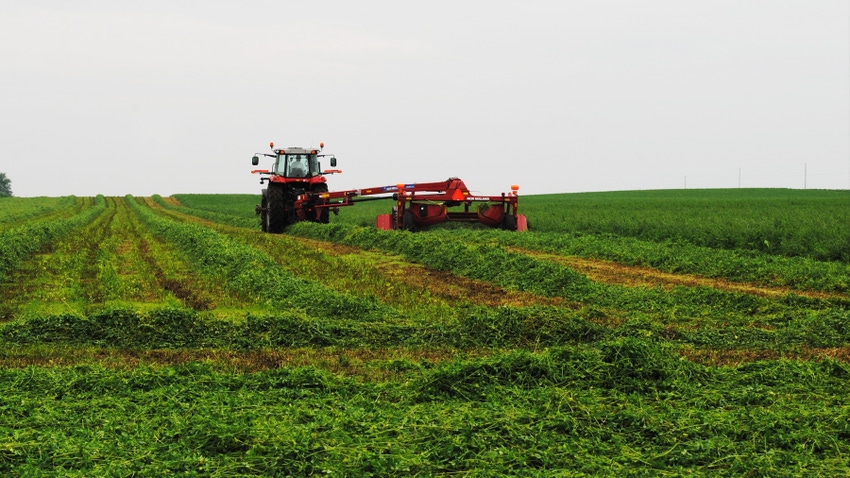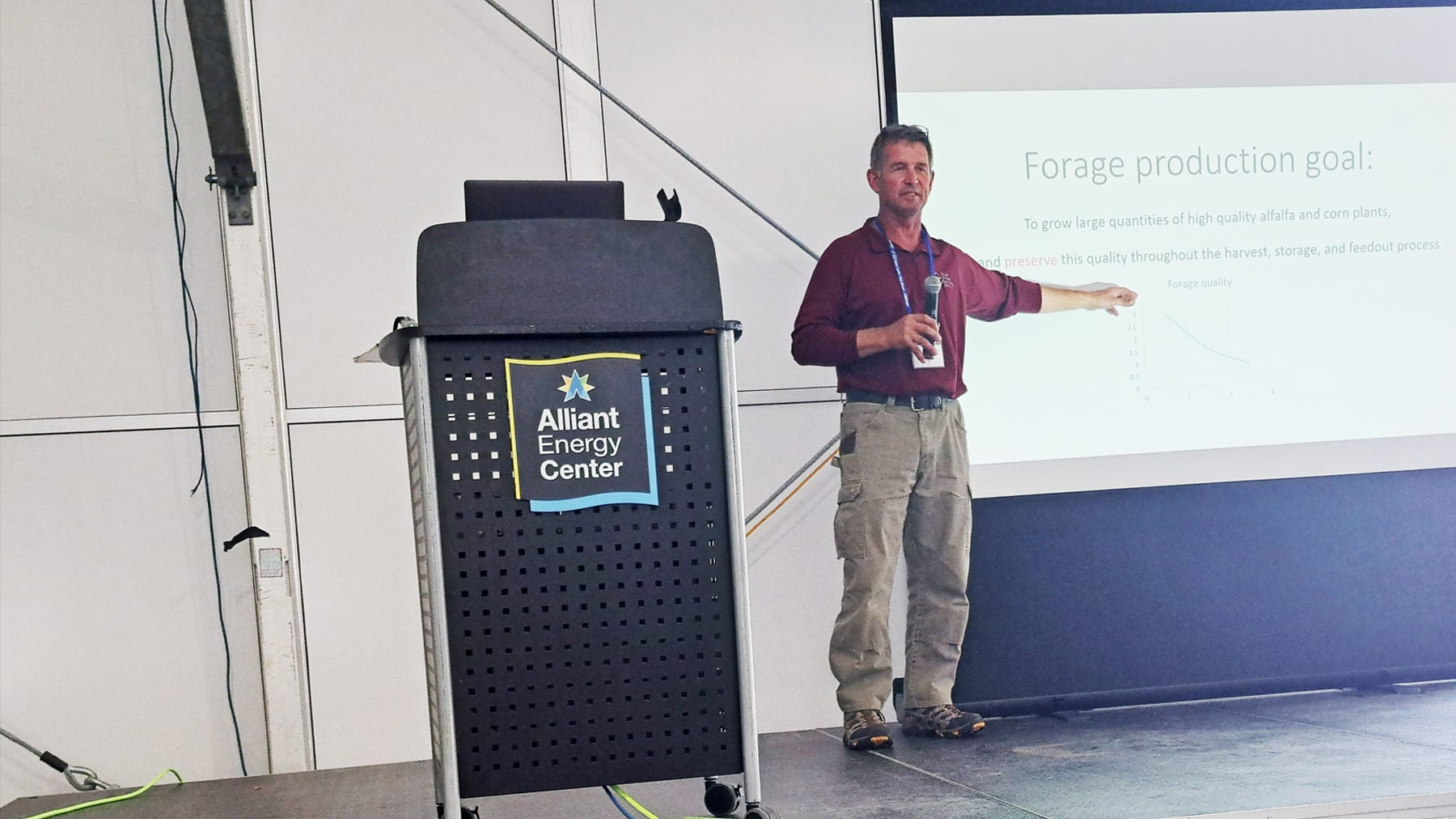
Rick Dado and his wife, Gwen, own Four Hands Holsteins near Amery in Polk County in northwestern Wisconsin. The couple and their four children established the dairy farm in 2007 after purchasing the farm from Gwen’s family when Dado was 36 years old.
Before he became a full-time dairy farmer, Dado received a doctorate in dairy nutrition from Southern Illinois University in Carbondale, Ill., and taught at the university. He then worked in tech support for a dairy nutrition company in Michigan. His experiences working in education and in the dairy industry before starting to farm have been priceless in developing a herd of 500 high-producing, registered Holstein cows and 400 registered Holstein heifers, and managing 1,500 acres of crops.
The Dados’ crop program includes 500 acres of corn for grain, 500 acres of alfalfa, 400 acres of brown midrib corn for silage and 100 acres of grass hay. About 60% of the ration for their milking herd is made up of forages, which is why producing high-quality forages from harvest through feedout is a high priority at Four Hands Holsteins.
Their alfalfa stands last three years after the seeding year before they are terminated in the fall and rotated to corn the following spring. “You can’t let these stands get old,” Dado says. “Removing alfalfa in the fall makes it easier to till in the spring.”
Challenges to quality
Waiting for his custom harvester to chop haylage is not ideal, Dado says, and sometimes comes at the expense of alfalfa quality. One of his biggest challenges is not getting forage cut soon enough, especially the first cutting. Even so, he tries to maintain harvest efficiency when schedules get delayed to capture as much feed quality as possible.
Growing, harvesting and storing forages is not cheap, Dado says. “It’s expensive to grow this feed. Why not try and do a good job?”

FEATURED SPEAKER: Rick Dado was asked to speak about forage production on his dairy farm at World Dairy Expo this year after winning the Corn Silage Counts category at last year’s World Forage Analysis Superbowl held at Expo. Rick and his wife, Gwen, own and operate Four Hands Holsteins, a 500-cow registered Holstein dairy farm near Amery in northwestern Wisconsin.
Alfalfa is typically cut four times a year at Four Hands Holsteins, and every cutting is stored in the same bunker, which means Dado is constantly covering and uncovering the haylage and moving tires during harvest.
“This requires more labor,” he admits, “but it saves more space than if we were to store alfalfa in multiple locations. It also means you are feeding green material for a few days.” Dado considers variations throughout the haylage when he balances rations, and makes sure the best-quality haylage is fed to his top producers
During the winter, he says keeping snow out of corn silage and haylage is one of his main challenges. “We feed the forage mixed with snow to our heifers,” he says.
The 80-20 rule
Dado admits there are things they do on the farm that are not 100% perfect. “We try to get to 80% perfection on things like forage quality and conception rates,” he says.
He abides by what he calls the 80-20 rule. He aims to hit 80% of his targets for forage quality and conception rates and expects things may not go as planned 20% of the time.
“We have to balance speed and quality,” he explains. “Time is important. We are always trying to seek a compromise. If I can hit that 80% in my forage quality or conception rates, I think I am doing pretty good.”
While Dado is willing to instill the 80-20 rule and compromise a bit on forage quality, he is not willing to compromise on calf care, milk quality or cow care, he says. Cows at Four Hands Holsteins produce an impressive 31,200 pounds of milk per cow per year with a 4.2% butterfat test and 3.3% protein.
Dado says there is no one way to operate a successful dairy. By applying what he learned earlier in his career, he has developed management strategies to meet his dairy and crop needs.
“Quality is a team effort,” he says about running a top-notch dairy. “It’s important to try to control what you can control. Other factors, like the weather, you can’t control. You have to let it go.”
About the Author(s)
You May Also Like






